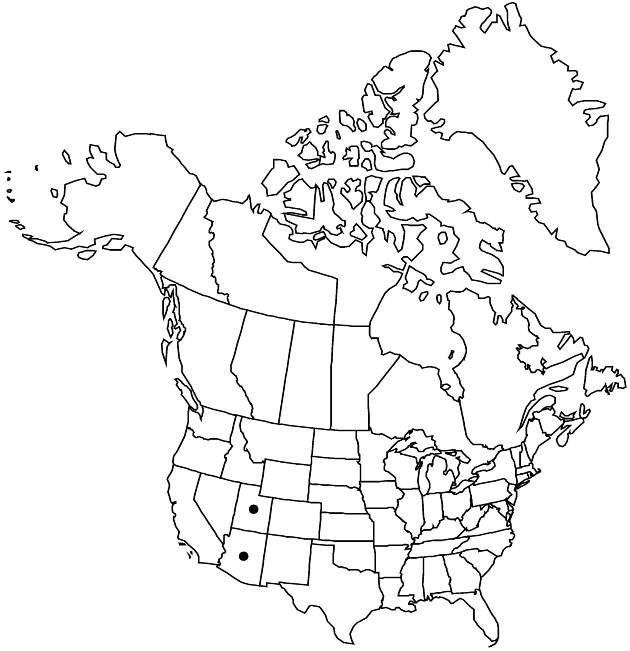Herrickia glauca var. pulchra
Sida 21: 897. 2004.
Plants 40–80 cm, short-stipitate-glandular. Stems 1–3+, glabrous or glabrescent proximally, ± densely stipitate-glandular distally. Leaf blades ovate-, elliptic-, or obovate-oblong to lanceolate, 20–90 × 5–21 mm, faces usually glabrous (proximal), sometimes sparsely stipitate glandular or abaxial midnerves stipitate-glandular (distal often). Heads 10–30+. Peduncles ± densely stipitate-glandular; bracts 0–2, foliaceous, densely stipitate-glandular. Involucres campanulate to cylindro campanulate, 6.5–9.5 mm. Phyllaries 26–40, ± densely stipitate-glandular (outer, green zones) or eglandular (inner). Ray florets 10–14; laminae 11.5–16 × 2.2–2.9 mm. Disc florets 29–40; corollas 7–8.5 mm, lobes 1–1.8 mm.
Phenology: Flowering Aug–Oct.
Habitat: Salt desert shrub, sagebrush, pinyon-juniper and ponderosa pine communities
Elevation: 800–2200 m
Discussion
Of conservation concern.
Variety pulchra is known only from the San Juan River basin (Washington and Kane counties, Utah; Coconino County, Arizona). It is of conservation concern in Utah. Recently, S. L. Welsh (Welsh et al. 2003) transferred var. pulchra from Aster glaucodes (syn. H. glauca) to A. wasatchensis on the grounds of its glandularity and “general conformation,” while acknowledging the glaucous foliage shared with Herrickia glauca. Yet the variety does not share critical features of the involucre with H. wasatchensis, and the glandularity is most likely a shared primitive feature within the group and is therefore not indicative of a particular relationship within the group. Distribution and morphology strongly suggest the relationships reported here. Alternately, var. pulchra may represent a distinct species, as hypothesized by G. L. Nesom (1994b).
Selected References
None.
